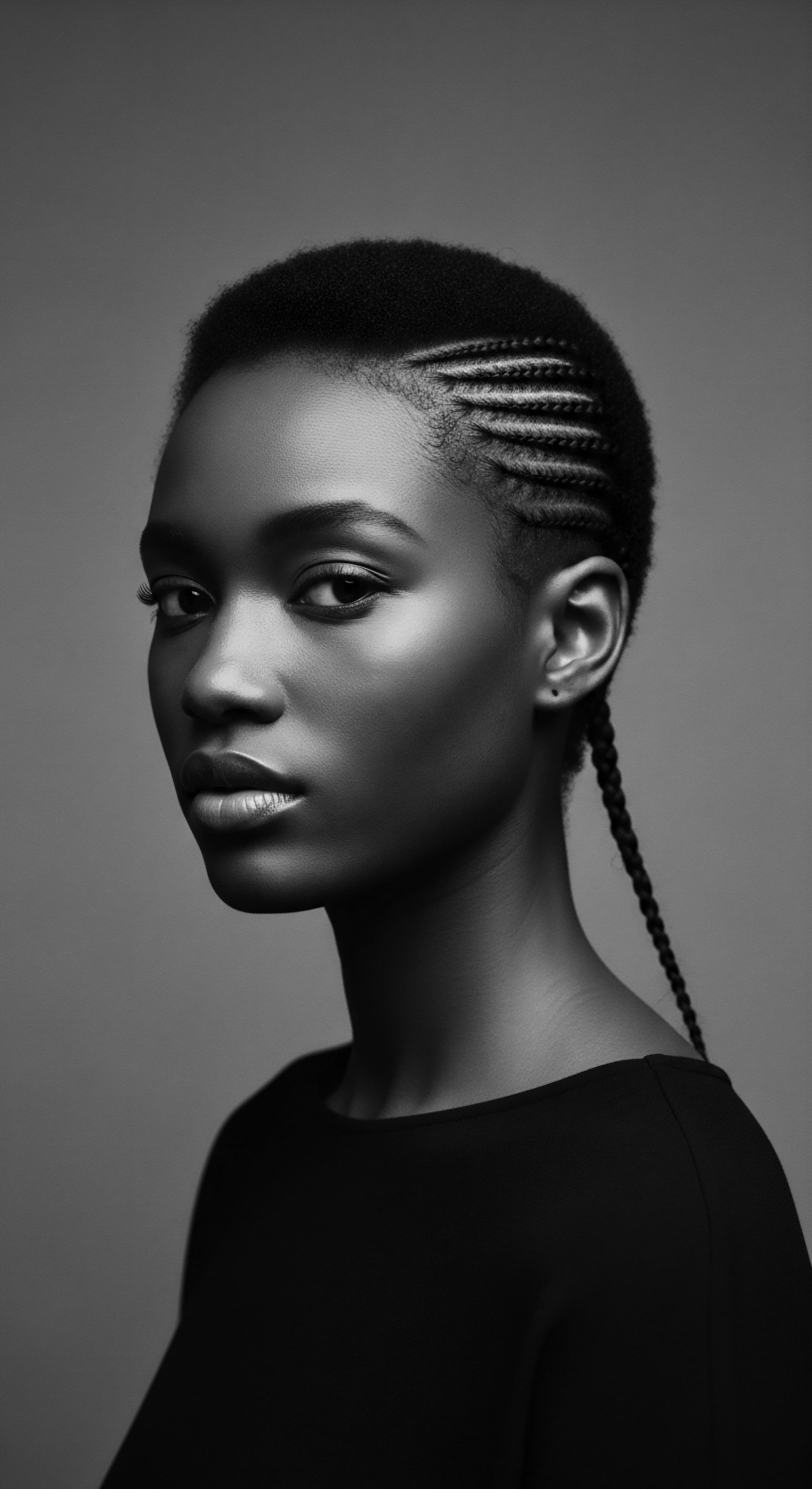
Roots
Consider the vibrant tapestry of human connection, the subtle threads that bind us not only to one another but to the echoes of generations past. For those whose ancestry traces through the intricate patterns of textured hair, this connection often resides in the very strands that spring from the scalp. It is here, in the helix and coil, that a quiet wisdom lies, speaking of continuity, resilience, and identity.
We inquire, then, whether traditional hair practices, those rituals passed down through time, possess the capacity to deepen one’s overall wellness and reinforce cultural bonds. It is a question not of mere cosmetic preference, but of profound cultural inheritance.
The story of textured hair is, at its heart, a chronicle of human adaptation, a biological marvel shaped by eons under diverse suns. The distinct helical structure, the elliptical follicle, the higher density of disulfide bonds—these are not random occurrences. They speak of protective mechanisms against intense solar radiation, of inherent strength, and of an architectural design that both absorbs and disperses moisture in unique ways. This biological heritage, this gift from our forebears, forms the fundamental groundwork upon which traditional practices were built, a practical wisdom informed by the very nature of the hair itself.
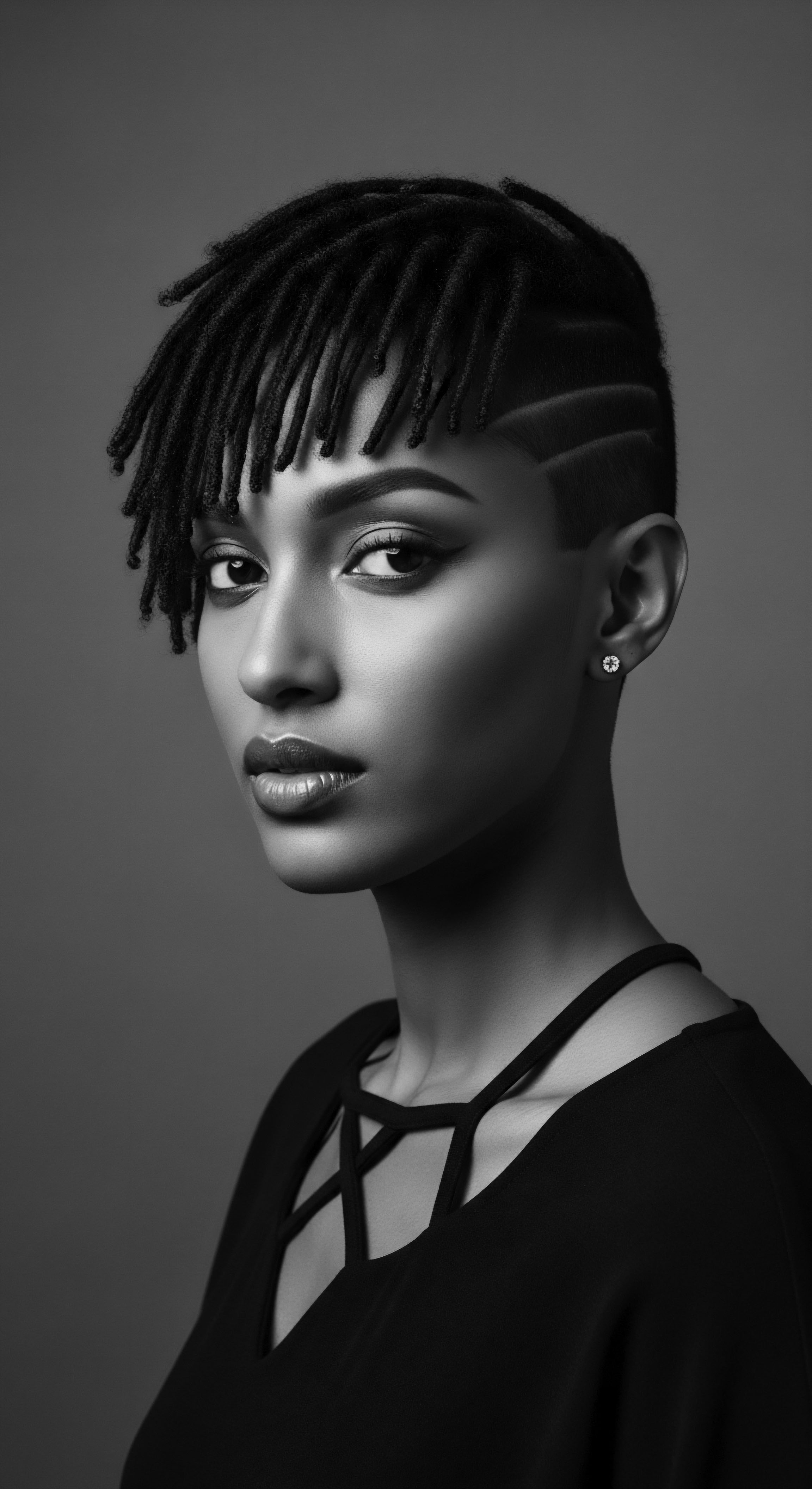
Hair Anatomy and Its Ancestral Resonance
The unique physiological characteristics of textured hair have long shaped the care rituals across diasporic communities. A cross-section of a textured hair strand frequently reveals an elliptical or flat shape, which impacts how the hair grows from the scalp and how it forms its characteristic curls and coils. This differs markedly from the rounder follicle of many straight hair types.
Furthermore, the cuticle, the outermost protective layer, often features a more lifted configuration in textured hair, making it more prone to moisture loss and requiring deliberate, often hands-on, hydration strategies. The traditional remedies for this reality were not accidental; they were direct responses to hair’s innate design.
Ancestral communities, long before the advent of modern microscopy, understood this delicate balance. Their methods, often involving natural oils, butters, and humectants sourced from their local environments, served to seal the cuticle and fortify the hair against the elements. This ancient understanding of hair’s inherent properties, a practical science developed over millennia, speaks to the depth of knowledge held within these historical practices.

Unraveling Hair Classification through a Cultural Lens
Modern hair typing systems, while offering a framework for describing curl patterns, often fall short of capturing the full scope of textured hair’s cultural significance and ancestral variations. These systems, frequently popularized in the late 20th century, categorize hair from straight to tightly coiled. While useful for product selection, they can inadvertently flatten the rich, diverse narratives tied to hair within different ancestral lineages.
The naming conventions for hair types in traditional societies, by contrast, frequently carried deeper meaning. A particular coil pattern might be associated with a specific clan, a rite of passage, or a communal identity. Understanding these historical nuances reveals that hair classification extends beyond mere morphology; it encompasses social structures, spiritual beliefs, and the very fabric of community. The discussion of hair’s identity is, therefore, inextricably linked to the identity of the people who wear it.
Traditional hair practices act as living archives, preserving ancestral knowledge of how textured hair thrives and connects individuals to their lineage.

The Lexicon of Textured Hair Heritage
The language surrounding textured hair is rich, often drawing from specific cultural contexts. Consider the terms used to describe different hair textures and styles across African and diasporic cultures. Many terms, once localized, now possess a global presence, reflecting the enduring legacy of these practices.
These terms are not simply labels; they are vessels carrying generations of meaning, communal understanding, and shared experience. They speak to an inherited lexicon of care, resilience, and beauty.
For instance, terms like ‘locs’ or ‘dreadlocks’, though sometimes simplified in contemporary discourse, carry spiritual and historical weight within various traditions, representing profound commitments and connections to ancestral paths. Or the concept of ‘shrinkage’, a common characteristic of textured hair, was not viewed as a flaw in traditional contexts but simply a physical reality, a natural expression of the hair’s coiled nature, influencing how styles were created to either celebrate or manage this attribute.

How Do Hair Growth Cycles Inform Traditional Care?
The human hair growth cycle—anagen (growth), catagen (transition), and telogen (rest)—is universal, yet its implications for textured hair, particularly within traditional care philosophies, are noteworthy. Given the inherent fragility at the curl’s apex and the susceptibility to breakage if not handled gently, traditional practices often prioritized methods that minimized manipulation and protected the hair during its delicate phases. This inherent understanding of the hair’s life cycle translated into styles that encouraged longevity and health.
Historically, protective styling, for example, served to extend the anagen phase by reducing mechanical stress, allowing strands to remain on the head longer. This was not a scientific theory but a practical observation. Communities knew that certain styles meant less shedding, more growth, and stronger hair over time, demonstrating an intuitive grasp of the hair’s biological rhythms and how to work in harmony with them.

Ritual
The meticulous crafting of hair, from simple parting to elaborate braids, is a testament to human ingenuity and a profound connection to self and community. Traditional hair practices rise above mere aesthetics; they represent a dialogue with ancestral memory, a vibrant expression of cultural identity, and a deliberate act of self-preservation. These rituals, often communal and deeply personal, speak volumes about the individual’s place within their heritage and the values cherished by their people. They are, in essence, tangible manifestations of a living history.
Styling textured hair has always been an art and a science, a fusion of learned techniques, practical wisdom, and creative vision. The tools, the methods, the very shapes sculpted from the hair — each carries a story, a lineage. From the intricate cornrows of ancient African civilizations to the diverse braiding patterns seen across the diaspora, these practices have not merely transformed hair; they have preserved narratives, communicated status, and fostered deep community bonds. They are living traditions, adapting through time while retaining their core resonance.

Protective Styling Through the Ages
Protective styles, which shield the hair from environmental damage and excessive manipulation, represent a cornerstone of textured hair care across millennia. Their origins are rooted in practical necessity ❉ minimizing breakage, promoting length retention, and offering ease of maintenance in diverse climates. Yet, their significance extends far beyond functionality.
These styles, such as Cornrows, Braids, and Twists, have historically served as visual markers of tribal affiliation, marital status, age, and social hierarchy. The patterns often held symbolic meanings, conveying stories or blessings.
Consider the ancient tradition of African braiding. Archeological findings and historical accounts reveal the sophisticated artistry involved. In many West African societies, the act of braiding was a communal activity, a time for sharing stories, wisdom, and strengthening intergenerational ties.
The techniques, passed from elder to youth, were not simply about styling; they were lessons in patience, connection, and respect for the hair’s inherent resilience. The enduring popularity of these styles today speaks to their timeless efficacy and their deep cultural rootedness.
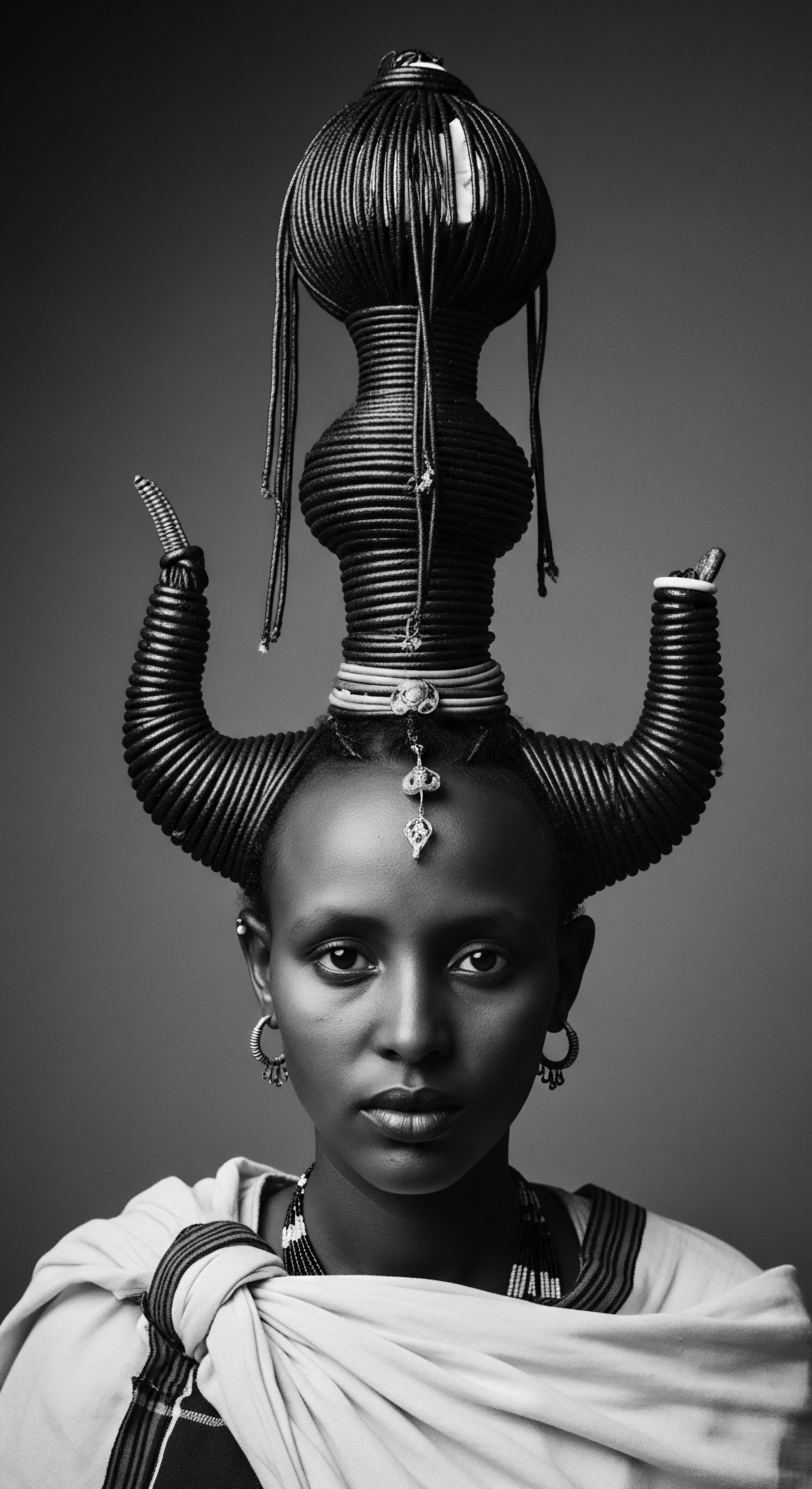
Natural Styling ❉ Echoes of Traditional Definition
Embracing the natural curl and coil pattern is a contemporary movement with ancient roots. Before chemical alterations became widespread, people styled their hair in ways that honored its inherent texture. Methods for enhancing curl definition often involved careful manipulation, layering of natural emollients, and air drying, rather than heat. This approach fostered a deep relationship with the hair, understanding its unique tendencies and working with them, not against them.
The application of plant-based gels, the use of certain leaves or barks to create slippery textures, and the meticulous finger-coiling techniques—all speak to an ancient practical science of hair manipulation. These methods, often passed down through familial lines, demonstrate a sophisticated empirical knowledge of how to enhance the hair’s natural beauty without relying on harsh chemicals or excessive heat.
Hair is a canvas for cultural expression, with each braid, twist, or adornment communicating a lineage of identity and belonging.
| Aspect of Hair Styling Primary Goal |
| Traditional Approach (Heritage Focus) Preservation, symbolic expression, community identification, spiritual connection. |
| Modern Approach (Contemporary Focus) Aesthetics, versatility, convenience, individual preference. |
| Aspect of Hair Styling Tools & Materials |
| Traditional Approach (Heritage Focus) Natural combs (bone, wood), fingers, plant fibers, earth pigments, natural oils and butters. |
| Modern Approach (Contemporary Focus) Plastic combs, metal tools, synthetic products, heat appliances, chemical treatments. |
| Aspect of Hair Styling Social Context |
| Traditional Approach (Heritage Focus) Communal activity, intergenerational knowledge transfer, rites of passage. |
| Modern Approach (Contemporary Focus) Often individualistic, salon-based, influenced by media trends. |
| Aspect of Hair Styling Relationship with Hair's Nature |
| Traditional Approach (Heritage Focus) Working with inherent texture, protective manipulation, long-term health. |
| Modern Approach (Contemporary Focus) Altering texture (chemical, heat), short-term styling, often with less emphasis on long-term health. |
| Aspect of Hair Styling Understanding this historical divergence reveals the enduring value of ancestral methods for holistic hair care and identity. |

The Heritage of Wigs and Hair Extensions
While often perceived as contemporary trends, wigs and hair extensions possess a storied past within many cultures, particularly those with textured hair heritage. From ancient Egypt, where wigs served as markers of status, hygiene, and protection from the sun, to various African societies where extensions were used to create elaborate, symbolic hairstyles, the practice of adorning the head with added hair is not new. These were not always about concealing natural hair but often about enhancing its presentation or signifying a particular social role.
The materials used in these historical extensions were often natural ❉ human hair, animal fibers, or plant materials braided or twisted into the wearer’s hair. This practice speaks to a resourceful and creative approach to hair artistry, using available resources to sculpt magnificent and meaningful headpieces. The significance lay not just in the adornment itself, but in the skill required to create and maintain it, often a specialized craft passed down through families.

Can Heat Styling Be Harmonized with Traditional Wisdom?
Modern hair care often incorporates heat styling, from blow dryers to flat irons. While offering versatility, excessive heat can compromise the integrity of textured hair, leading to dryness and breakage. Traditional practices, by and large, relied on air-drying or natural methods of manipulation. This historical reliance on non-heat methods offers a critical lesson in protective styling and minimizing damage.
For those who choose to use heat today, a careful approach is key. It involves preparing the hair with protective barriers, using lower temperatures, and limiting frequency. This thoughtful integration of modern tools with an ancestral ethos of preservation and care allows individuals to explore versatility without sacrificing the hair’s long-term vitality. The wisdom of gentleness, inherent in traditional practices, stands as a guide.
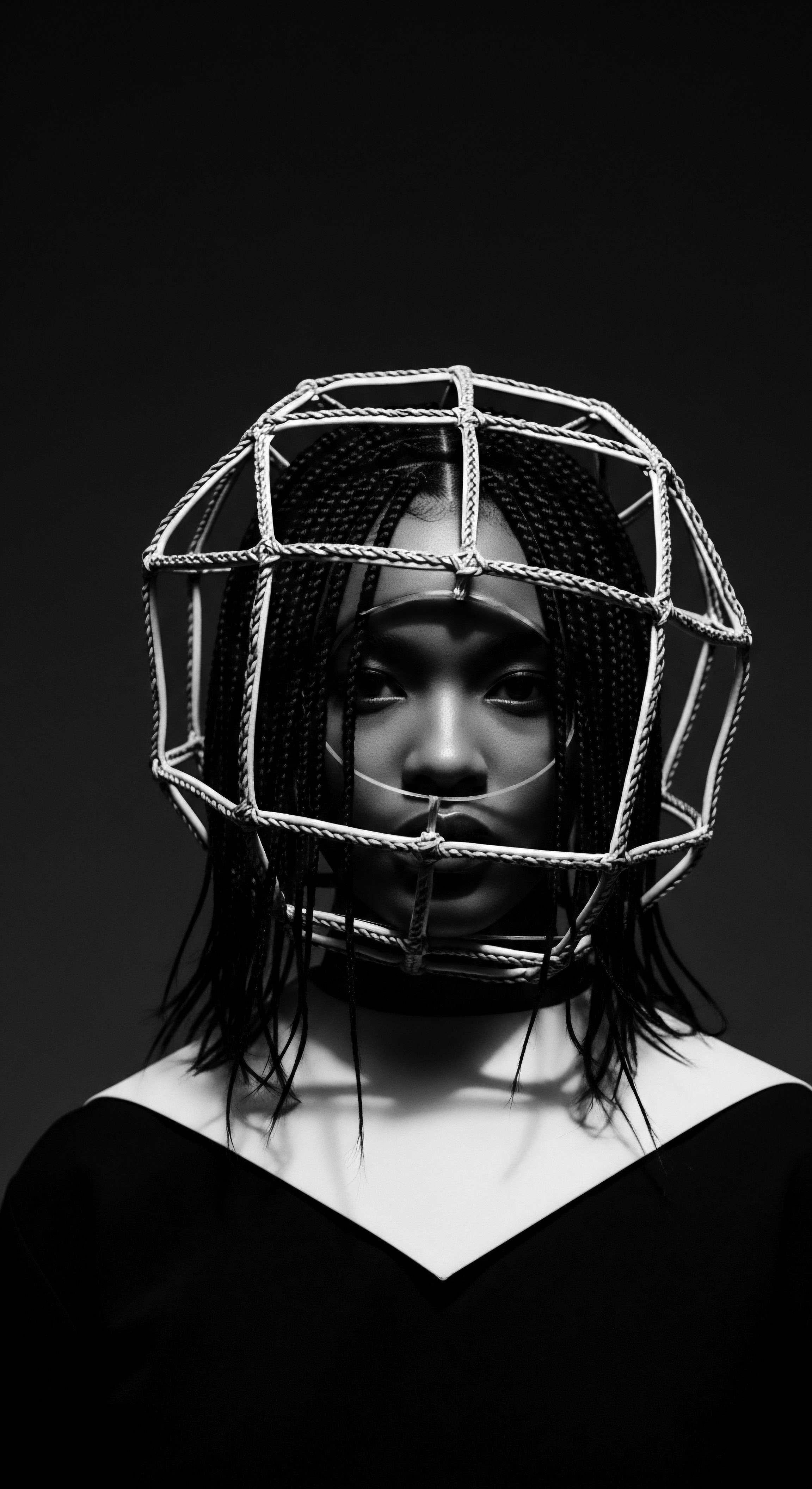
Traditional Tools for Textured Hair
The tools employed in traditional hair care are as important as the practices themselves, often crafted from natural materials and imbued with cultural significance.
- Wooden Combs ❉ Carved from indigenous woods, these combs often featured wide teeth, designed to gently detangle coiled hair without causing undue stress or breakage. Their smooth, non-static surfaces were ideal for preserving moisture.
- Fingers ❉ The most ancient and enduring tool, the human hand was, and remains, essential for detangling, parting, and shaping textured hair. This direct, tactile connection fosters a deeply personal and mindful approach to hair care.
- Natural Fibers and Leaves ❉ Certain plant fibers were historically used as gentle ties or wraps, while leaves or barks provided a natural slip for easier manipulation during styling.
- Bone Pins and Adornments ❉ Beyond simple styling, these intricately carved items served as decorative elements, often signifying tribal identity, social standing, or ritualistic purposes.
These tools, humble in their materials, represent a profound respect for the hair and the practices that sustained its beauty and cultural relevance for centuries.
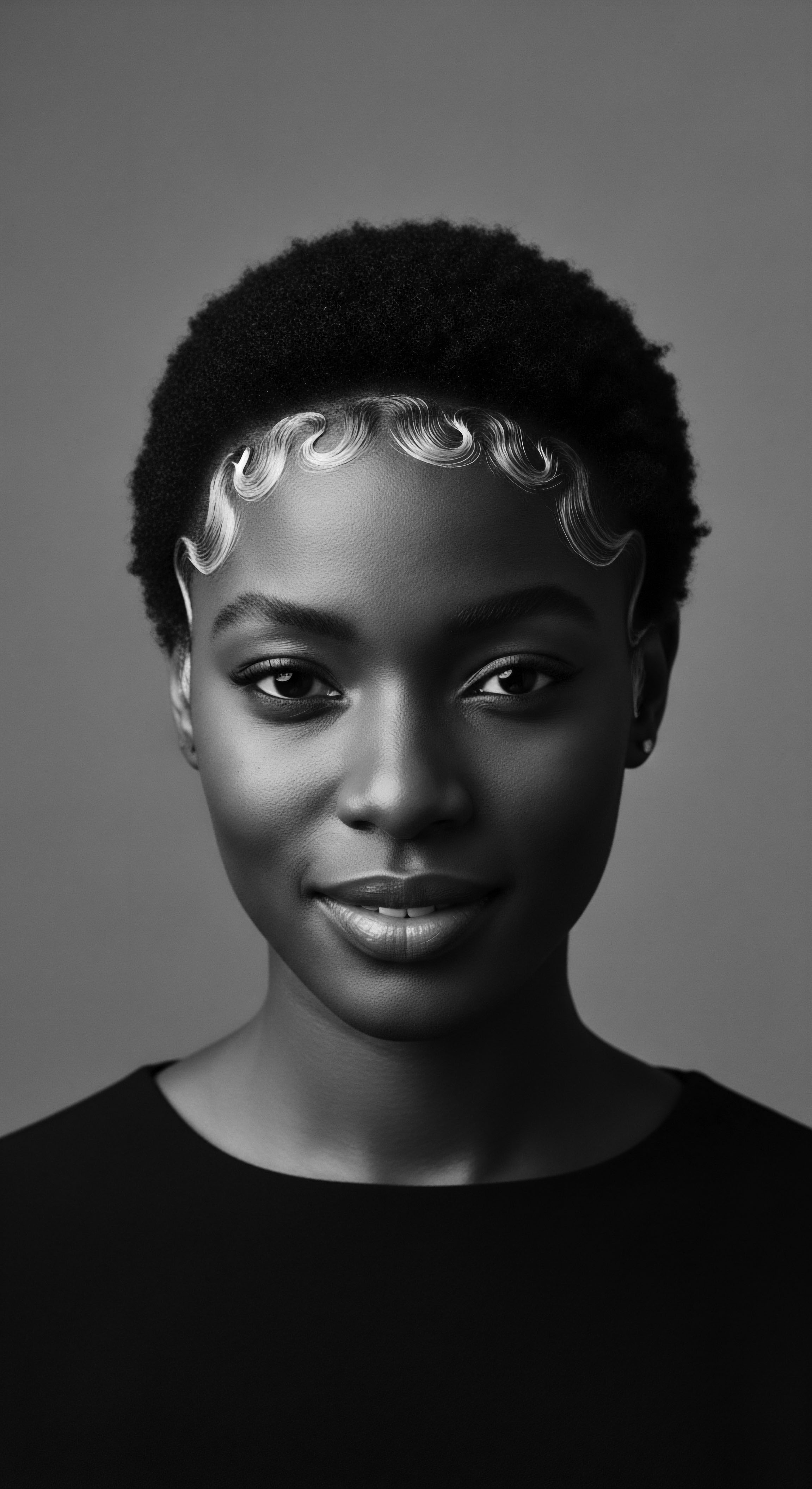
Relay
The continuum of care for textured hair is a living testament to ancestral wisdom, a profound relay of knowledge across generations. This section considers how traditional practices, deeply embedded in heritage, can inform a truly holistic approach to wellness and cultural connection today. It examines the intricate relationship between internal vitality and external presentation, recognizing that hair health is not merely a superficial concern but a reflection of deeper physiological and spiritual equilibrium. This holistic perspective, drawing from long-standing traditions, invites a reappraisal of modern approaches, grounding them in the profound intelligence of the past.
The journey to vibrant hair begins far beyond the topical application of products; it starts within the individual, with the food consumed, the water imbibed, and the peace cultivated in the spirit. Traditional wellness philosophies inherently understood this interconnectedness. They did not separate hair care from body care or from the overall rhythm of life. This integrated view, which finds increasing validation in contemporary science, reveals the deep intelligence woven into ancestral practices, offering a pathway to not just healthy hair, but a healthier self.
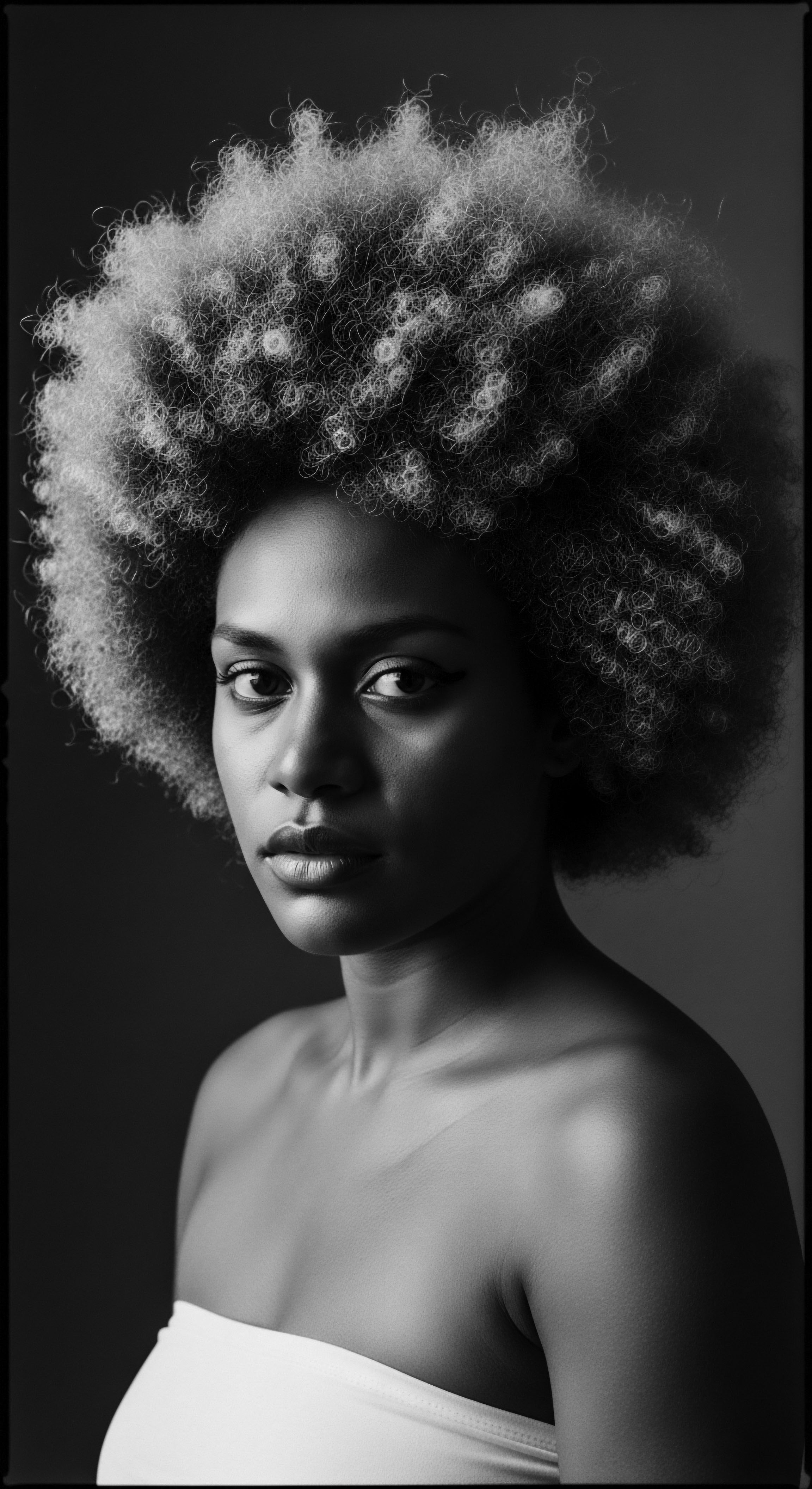
Building Regimens from Ancestral Wisdom
A personalized textured hair regimen, truly effective and sustainable, often finds its most potent inspiration in the wisdom passed down through ancestral lines. This involves understanding the hair’s unique requirements — its thirst for moisture, its need for gentle handling, its propensity for shrinkage. Traditional practices, fine-tuned over centuries, offer a blueprint for such understanding.
For instance, the ancient practice of hair oiling, prevalent across many cultures with textured hair, addressed the hair’s need for lubrication and protection. Oils like Coconut Oil in tropical regions or Shea Butter in West Africa were not randomly chosen; their molecular structures and emollient properties made them exceptionally effective for sealing moisture into the hair shaft, reducing friction, and adding natural luster. This historical insight can guide contemporary choices, encouraging a return to natural, nutrient-rich ingredients that resonate with the hair’s inherent needs.

The Nighttime Sanctuary ❉ Bonnet Wisdom Through Time
The nighttime care of textured hair, particularly the use of head coverings like bonnets or scarves, is a practice rooted in both practicality and preservation. While seemingly simple, the act of wrapping or covering hair before sleep addresses critical needs ❉ preventing friction against absorbent fabrics like cotton, which can strip hair of moisture and lead to breakage; preserving styled hair; and maintaining cleanliness. This seemingly modern accessory has historical antecedents that span continents and centuries.
In many African and diasporic communities, head coverings were not solely for adornment or cultural expression during the day. They served utilitarian purposes at night, safeguarding elaborate hairstyles and protecting the hair during sleep. For example, silk or satin fabrics, known for their smooth surface, were historically utilized in various forms to preserve hair and prevent tangles.
This practice reflects a deep, intuitive knowledge of hair biology, ensuring its protection during periods of rest. The continuity of this tradition into the present day highlights its enduring value for hair health.
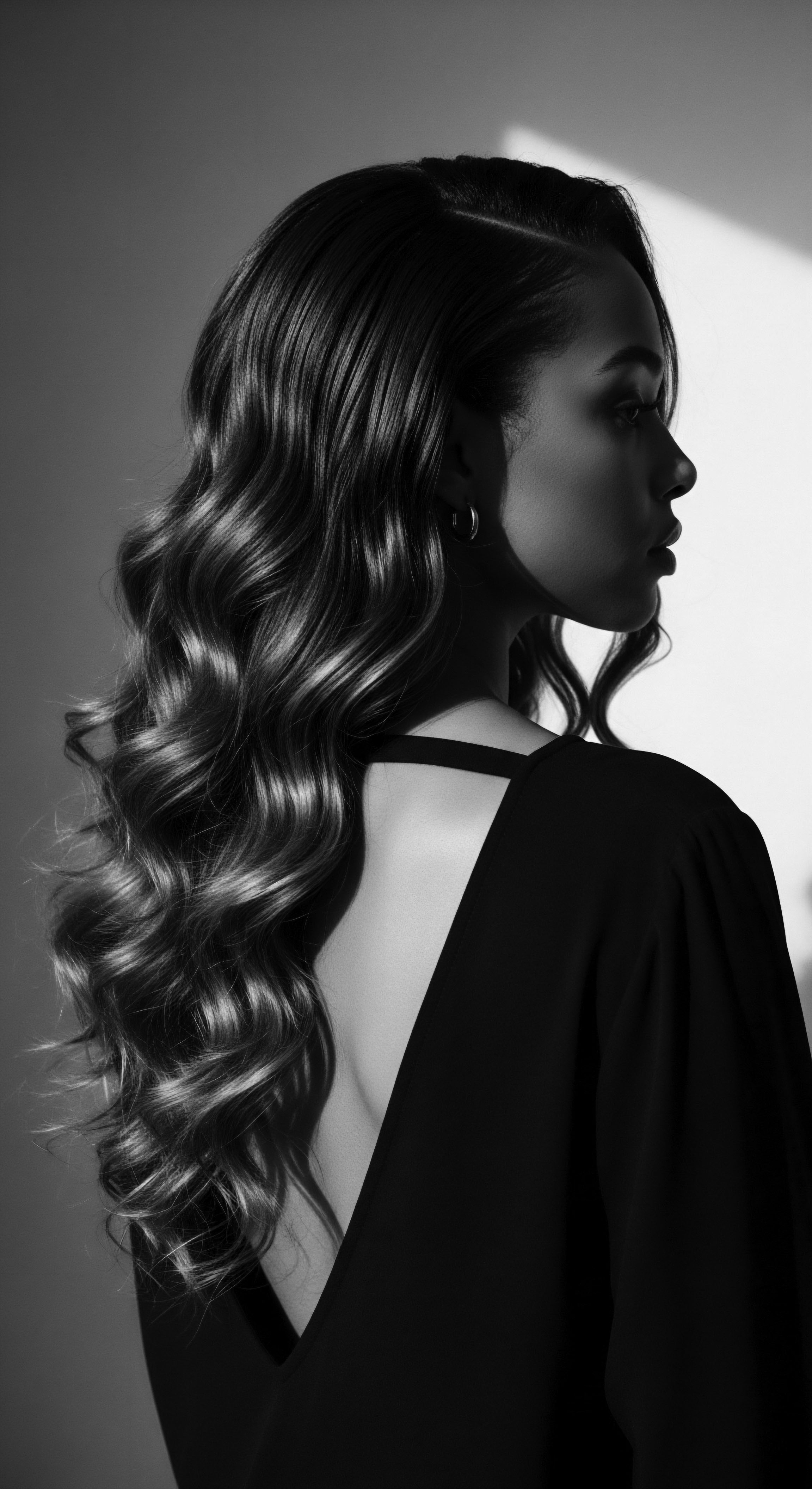
Can Modern Science Validate Ancient Hair Ingredients?
The intersection of modern scientific understanding and ancestral knowledge reveals fascinating convergences. Many traditional ingredients, once used based on empirical observation, now find validation through biochemical analysis.
- Shea Butter (Vitellaria paradoxa) ❉ Historically used across West Africa for its moisturizing and protective properties. Modern science confirms its richness in fatty acids (oleic, stearic) and vitamins A and E, which provide deep conditioning and act as anti-inflammatory agents for the scalp.
- Aloe Vera (Aloe barbadensis miller) ❉ A staple in many traditional hair care regimens, revered for its soothing and hydrating qualities. Scientific studies identify its enzymes, amino acids, and minerals that promote scalp health and strengthen hair strands.
- Chebe Powder (Crozophora senegalensis, etc.) ❉ Used by the Basara Arab women of Chad to grow exceptionally long hair. While formal peer-reviewed studies are still developing, anecdotal evidence and traditional practices suggest its effectiveness in strengthening hair, preventing breakage, and enhancing length retention through unique preparation methods and protective layering.
- Rhassoul Clay (Ghassoul Clay) ❉ Mined from the Atlas Mountains of Morocco, this clay was traditionally used as a shampoo and conditioner. Its high mineral content, particularly silica and magnesium, is now understood to gently cleanse the hair and scalp while conditioning and improving elasticity.
These examples illustrate a beautiful symmetry ❉ the wisdom of the ancients, refined over generations, is often corroborated by the precise measurements and analyses of contemporary research, underscoring the enduring efficacy of these heritage ingredients.

Resolving Hair Concerns with Traditional Wisdom
Many common textured hair concerns, such as dryness, breakage, and scalp irritation, have been addressed by traditional remedies for centuries. Rather than reaching for a quick fix, ancestral methods often emphasized a holistic approach, recognizing that hair issues can stem from internal imbalances or improper external care.
For example, addressing dryness often involved regular oiling and moisturizing, combined with dietary practices that provided essential nutrients. Breakage was mitigated through protective styling and minimizing manipulation, coupled with a deep respect for the hair’s delicate nature. Scalp irritation might be treated with soothing herbal rinses or poultices, designed to restore balance to the skin. These solutions, tried and tested through time, provide a robust framework for contemporary problem-solving, inviting individuals to look beyond quick fixes and towards sustainable, heritage-informed practices.
The wisdom of traditional hair practices offers a holistic blueprint for wellness, recognizing the inherent connection between scalp, strand, and spirit.

Holistic Influences on Hair Health
The holistic perspective on hair health, deeply embedded in many ancestral wellness philosophies, views the hair as an extension of one’s overall well-being. This perspective encompasses nutrition, stress management, spiritual harmony, and environmental factors. Traditional healers and practitioners understood that vibrant hair was a visible indicator of internal balance.
Diet, for instance, played a significant role. Cultures with strong hair traditions often consumed diets rich in indigenous fruits, vegetables, healthy fats, and proteins, providing the necessary building blocks for strong hair growth. The concept of ‘eating for Beauty’ was not a modern marketing slogan, but a practical reality, acknowledging the direct link between nutrient intake and the vitality of hair, skin, and nails. Stress, too, was understood to impact the body’s functions, including hair growth.
Traditional practices, therefore, often included rituals that fostered mental peace and communal support, recognizing their indirect yet powerful influence on physical health, including the health of one’s hair. This ancestral understanding underscores that true radiance emanates from within, a truth that continues to guide those who seek genuine well-being for their textured hair.

Reflection
The journey through the heritage of textured hair, from its elemental biological design to its intricate cultural expressions, reveals a profound truth ❉ our hair is a living archive. It holds not only the genetic blueprint of our ancestry but also the stories, wisdom, and resilience of generations who cared for it, adorned it, and defended its presence in the world. Traditional hair practices, far from being relics of a distant past, are vibrant, enduring currents that stream into our present moment, offering more than just regimens for physical health. They offer a pathway to a deeper resonance with one’s own lineage, a profound sense of self, and a strengthened connection to the collective human spirit.
When we braid, twist, or oil our textured hair with intention, drawing inspiration from the methods of our forebears, we are not merely performing a ritual of care. We are participating in a timeless conversation, honoring the ingenuity and resourcefulness of those who came before us. We are affirming the inherent beauty and strength of our hair, countering narratives that might seek to diminish its natural form.
This act of conscious connection, steeped in historical understanding, cultivates a holistic wellness that extends beyond the physical strand, nourishing the soul and reaffirming a rich cultural identity. The ‘Soul of a Strand’ then, is not an abstract concept; it is the living legacy of countless hands, minds, and hearts, woven into the very fabric of our being, waiting to be recognized, respected, and carried forward.

References
- Bundles, A. (2001). On Her Own Ground ❉ The Life and Times of Madam C.J. Walker. Scribner.
- Byrd, A. (2001). Hair Story ❉ Untangling the Roots of Black Hair in America. St. Martin’s Press.
- De Beauvoir, S. (1949). The Second Sex. Vintage Books.
- Hooks, B. (1995). Art on My Mind ❉ Visual Politics. New Press.
- Mercer, K. (1994). Welcome to the Jungle ❉ New Positions in Cultural and Ethnic Studies. Routledge.
- Opoku-Mensah, A. (1995). The Ancient Egyptian Concept of Man. Longman.
- Patel, J. (2018). The Science of Hair ❉ A Comprehensive Guide to Hair Biology and Hair Care. Allured Business Media.
- Sweetman, J. (2011). Hair ❉ A Cultural History. Berg.
- Tharps, L. & Byrd, A. (2014). Hair Story ❉ Untangling the Roots of Black Hair in America, Updated Edition. St. Martin’s Press.
